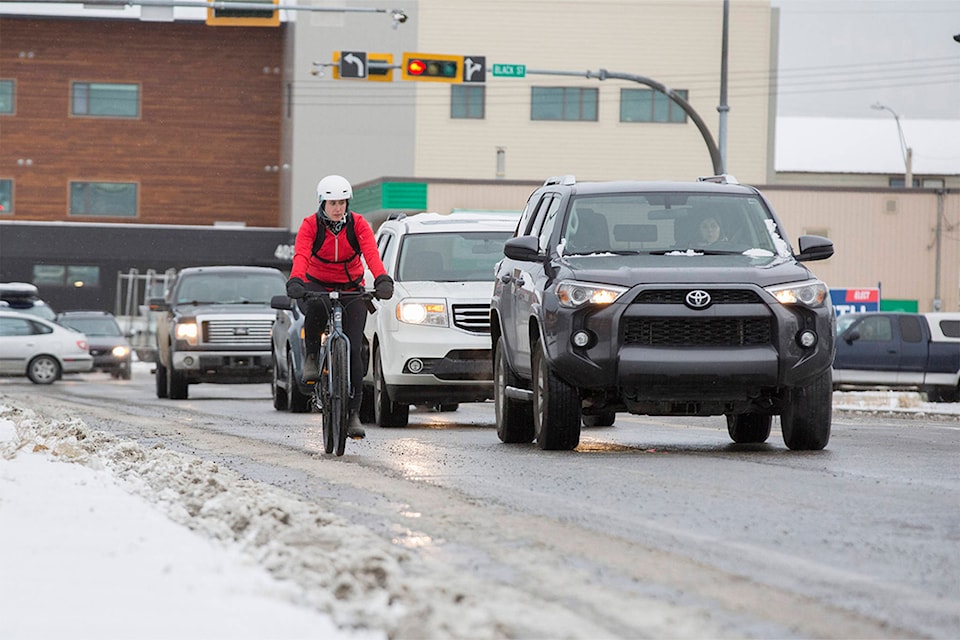Those who get around town by e-bike now have a new bylaw to refer to in determining which routes they can travel by.
At Whitehorse city council’s April 26 meeting, members approved third reading of the e-bike bylaw, along with changes to other bylaws to align with the e-bike bylaw.
The new regulations were passed despite more than a dozen presentations by phone and written submissions from residents opposed to parts of the bylaw. Many took issue with the classification system for e-bikes that determines which trails they may travel on.
The bylaw
Class 1, pedal-assisted e-bikes that can travel speeds up to 32 km/hr and are permitted on any trails, while Class 2 e-bikes (which can also travel speeds up to 32 km/hr, but are throttle-assisted, meaning they don’t require pedalling) are permitted on paved trails only.
Class 3 e-bikes, which have more power and can travel up to 45 km/hr are restricted to motorized multi-use trails and the Two Mile Hill paved pathway, as bikes are not permitted to use that roadway at all under city bylaws.
All e-bikes can be used on other roads, except Two Mile Hill, with the same rules that apply to pedal bikes.
Fines between $50 and $300 would apply for failing to follow the bylaw.
The bylaw came forward after consultations with retailers and stakeholder groups.
A draft was first presented to council during a roundtable discussion in January before the formal document came forward for first reading in early April.
Delegates
Throughout the April 26 presentations, many took issue with the restrictions for Class 2 e-bikes, arguing the throttle should not limit what trails riders are permitted on. Many pointed out the Class 2 e-bikes have the same maximum speeds as the Class 1 e-bikes.
For many, the decision of whether to purchase a Class 1 or Class 2 e-bike comes down to price with the throttle-assistance model (Class 2) being less expensive. It was argued by some that the classifications, therefore, are discriminatory against those with lower incomes who can’t afford the more expensive models.
As delegate Erik Eaton Miller said, prices can range between $1,500 and $4,000 depending on whether you’re buying a Class 2 or Class 1 e-bike.
“To then say that only the most expensive e-bikes are permitted universal trail access is to say that only the wealthiest residents are permitted to ride anywhere,” he said. “Furthermore, I would assert that Whitehorse’s Type 1 trails are both inadequate and non-contiguous, with large amounts of Type 2 trails or dangerous roadways to be traversed between them. Therefore, cyclists who can only afford a cheaper Chinese e-bike are forced to either ride in more dangerous places, or to choose deliberate non-compliance, and therefore risk fines, impound, or even warrantless search and seizure.”
Another delegate — Amanda Pearson — argued the differentiation between classes 1 and 2 “makes no sense to me,” stating if the bylaw comes into effect she will no longer be able to use certain trails that she now rides on.
As it was clarified later in the meeting by City of Whitehorse staff though, without an e-bike bylaw in place the bikes are not technically allowed on any trail in the city. It is the e-bike bylaw that would allow them to be on certain trails. Prior to the passing of the bylaw, e-bikes were viewed as motorized vehicles and therefore not permitted on the trails outlined in the bylaw.
Jeff O’Farrell, the city’s director of community and recreation services, told council the bike classifications are based on a widely-used system in place throughout North America and used by industry.
He noted city staff opted not to propose a different classification system for Whitehorse, as that would be confusing to retailers and e-bike riders who have already adapted to the established classification system.
On the trail limitations by class, O’Farrell explained, “we knew we had to draw a line somewhere.” That line was drawn between the pedal assist and throttle assist bikes, something that is common in many jurisdictions.
While O’Farrell acknowledged there may be other municipalities that use other methods to determine which e-bikes can be on certain trails, all the jurisdictions the city looked at based their regulations on that same method.
Council discussion
Before voting in favour of the bylaw, council members acknowledged the concerns from delegates while also voicing support for the bylaw.
“I think this bylaw is a good place to start,” Coun. Laura Cabott said.
Both she and Coun. Steve Roddick highlighted the importance of revisiting the bylaw after its been in place for some time.
While Roddick had put forward a motion that it be revisited in two years, he eventually withdrew the motion when it was pointed out there are mechanisms in place to look at the bylaw again without the need for a motion being passed.
Meanwhile, Coun. Jan Stick also acknowledged the concerns of a hiker who spoke about trail conflicts between cyclists and hikers and argued there should be separate trails for each user group.
“I think we have to look out for each other,” Stick said of all trail users, highlighting the need for everyone to be more aware of others when they are out on the trail.
Stick described the new bylaw as a “cautious” approach to something new. With the bylaw being so new, it’s an approach she believes should be taken.
“I think there’s some good work in there,” she said.
Similarly, Coun. Jocelyn Curteanu said the bylaw is “solid” and strikes a balance between the needs of various trail users.
With the bylaw now adopted, an education campaign will get underway to inform the community of the new rules.
Contact Stephanie Waddell at stephanie.waddell@yukon-news.com
